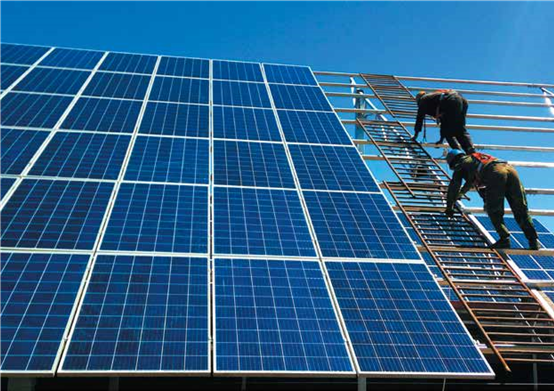
Workers install solar panels at the Yuangudui Village Solar Park, Tianjiahe Township, Gansu Province.
On October 11, 2014, both the National Energy Administration of China and the State Council Leading Group Office of Poverty Alleviation and Development, which are responsible for energy and economic development in impoverished areas respectively, announced a six-year collaborative program. The two organizations would construct solar power plants in rural Weiyuan County in Dingxi Prefecture, Gansu Province.
The program was not only an effort to improve the welfare of villagers by creating new jobs, but also a means of expanding the photovoltaic (PV) market to new areas. With the county’s barren hills and strong sunlight, it was a good location for a new 300-kw plant.
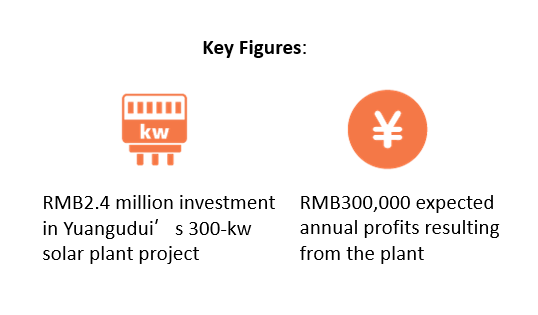
In 2016, Yuangudui Village of Tianjiahe Township in southern Weiyuan was chosen to be the site of the first solar plant. By then, pilot projects had already been conducted in 30 counties of six provinces. At the end of 2012, the average annual income of the village’s farmers was a mere RMB1,465.80. Here, 57% of the 447 households or 1,917 people were classified as poor.
The energy administration and the poverty alleviation office claim that village-level solar plants are the most effective form of poverty reduction when compared with larger-scale solar plant pilot projects, such as township, city or provincial-level plants. The creation of solar plants at a local level, they say, creates employment in a more concentrated area. This also generates investment in the renovation of the village. With more money for the village as a whole, the local conditions would improve much more than if benefits from the solar plant were spread over a larger area. Thus, the two organizations began funding construction, and managed to attract investment from the private sector.
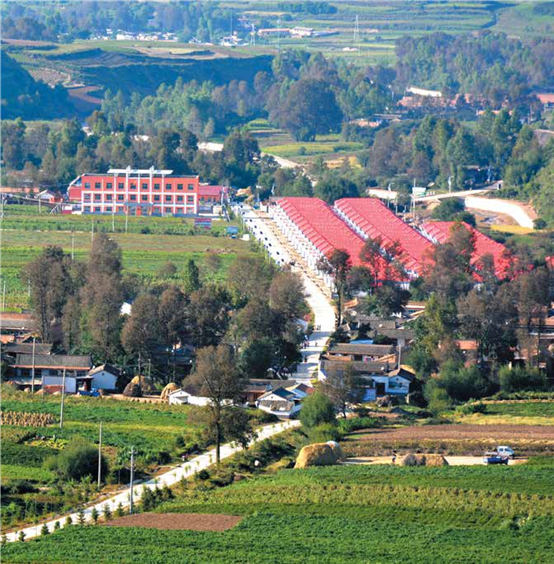
The newly renovated Yuangudui Village now features cement roads, solar street lights, and a new public square surrounded by red-roofed housing.
Modest returns
The total cost of construction in Yuangudui was RMB2.4 million. The government was responsible for the provision of land and project coordination. The private sector was responsible for the design of the plant, its construction and post-construction management.
The plant is expected to produce profits of RMB300,000 each year. The village collectively owns the power station and gets two thirds of the profits, while the rest goes to companies that invested or conduct post-construction maintenance and management. The vast majority of the village’s share, or RMB180,000, goes to poor households, and the remaining RMB20,000 is spent on managing the village’s public facilities.
“This money will not just be given away to villagers,” said Zhang Wanting, Yuangudui first Party secretary. “They will work in exchange for an income.” These jobs include public service positions, such as cleaning staff, caregivers for the elderly, or community project supervisors. A part of the Profits from the plant will also be handed out as monetary rewards, or as subsidies to households in extreme difficulty.
By the end of October 2021, Weiyuan has built 208 300-kw to 500-kw solar power stations in 135 villages. Having generated an accumulative total of about 214 million KWH of electricity, they have brought RMB141 million to these village collectives, benefiting 12,000 households with an annual income of RMB2,000 to 6,000.
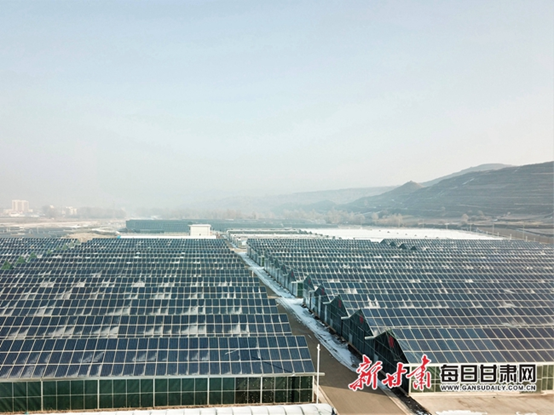
The PV edible fungi industrial park in Huichuan Township, Weiyuan County [photo Qiao Weinan / Gansu Daily]
Maximized benefits of solar panels
In addition to generating electricity, the Weiyuan County government also explored business opportunities of photovoltaic agriculture, such as cultivation of edible fungi, vegetable, seedlings of traditional Chinese medicine (TCM), and animal husbandry under the PV panels.
To attract companies, the Huichuan Township PV edible fungi industrial park, the largest of such parks in Weiyuan, exempts rentals in the first three years and half of the rental for the following two years. Dingxi Yuanshun Biotechnology Co, Ltd was among the first to open business in the park. It has cultivated more than four varieties of high-valued edible mushroom. In an interview in late 2021, Yang Feng, manager of Yuanshun, stated that in the past two years of operation, the company had received a total rental exemption of RMB300,000 from the park, achieved a total net income of RMB4.8 million, and an annual output value of more than RMB 16 million, bringing jobs to 188 nearby households.
With an area of 180,000 sq m in operation, photovoltaic agri-tourism is taking shape in the Huichuan park. From 2020 to 2021, the park received 25,000 tourists, who spent more than RMB800,000 in experiencing the “pick-your-own” business.
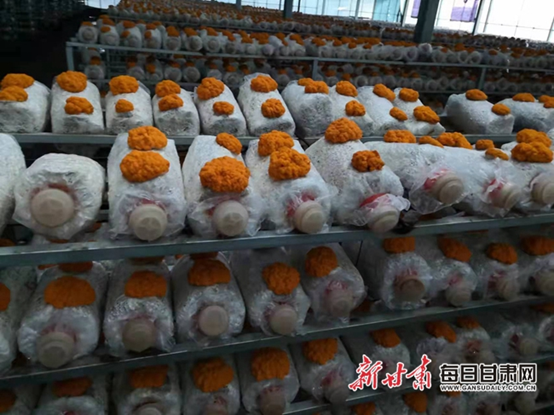
Mushrooms growing well in the PV edible fungi industrial park in Huichuan Township, Weiyuan County. [photo Wu Shengjun / Gansu Daily]
Development of photovoltaic agriculture is a boost to related businesses like storage, logistics, processing, and research. So far, Weiyuan has formed up a comprehensive industrial structure, namely, solar power generation on the top, agriculture underneath, job opportunities for nearby homes, and logistics and storage facilities installed in key areas, which broadened the income channels of residents. In Weiyuan, by leasing land usage rights, 1,042 households earn an average of RMB2,600 annually; by renting photovoltaic edible fungi greenhouses, 1,280 households earn at least RMB15,000 annually; by working on nearby farms, nearly 1,000 people earn an average of at least RMB6,000 annually.
This poverty reduction initiative allows agricultural use and electricity generating on the same land in a very cost-effective way, which should provide long-term effects on livelihood improvement and protection of the environment.
For more information, please contact WFP China COE (wfpcn.coe@wfp.org)
Category
Contributor
Weiyuan County Maximizes Benefits of Solar Power
Country
Case Study

